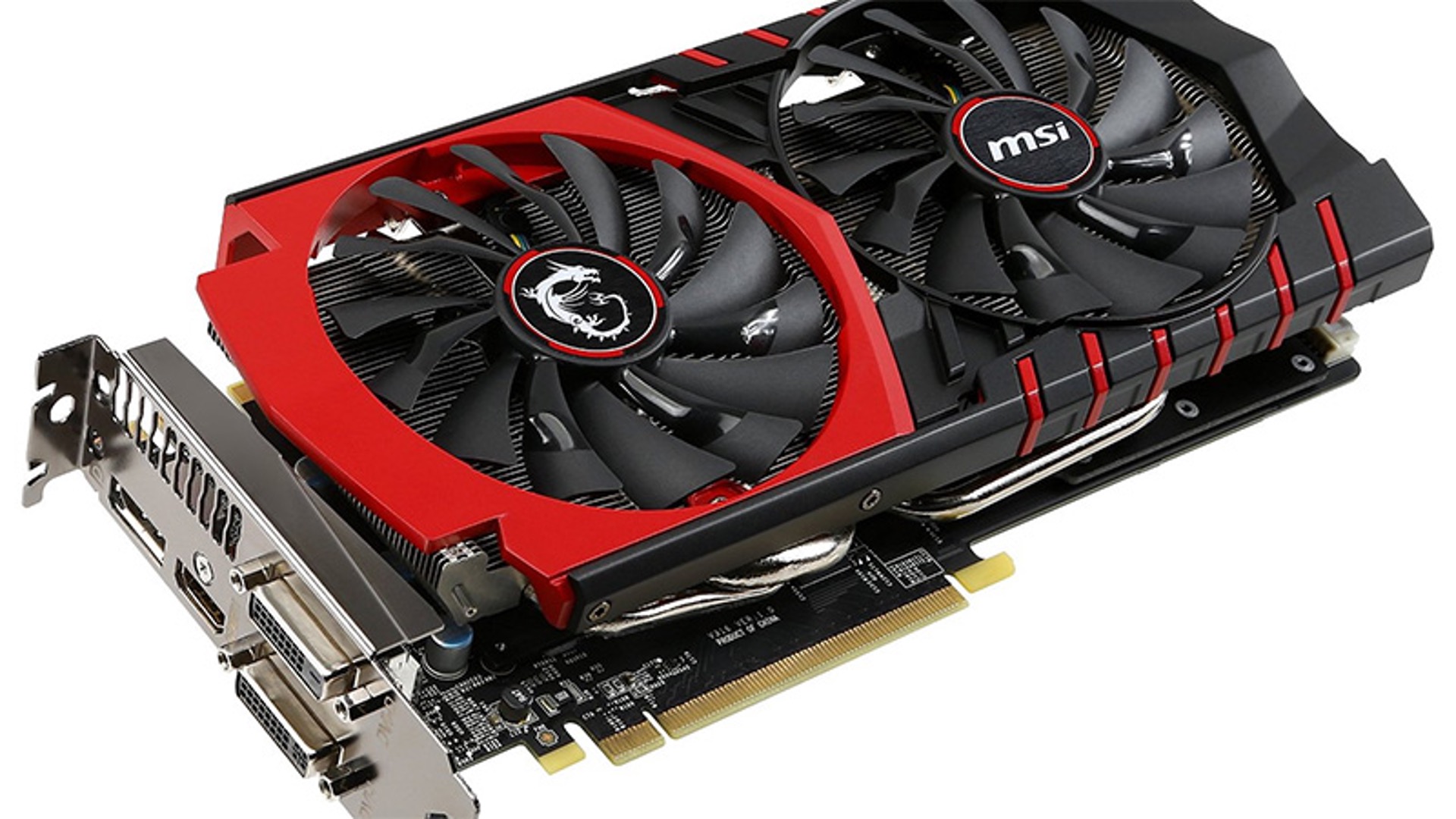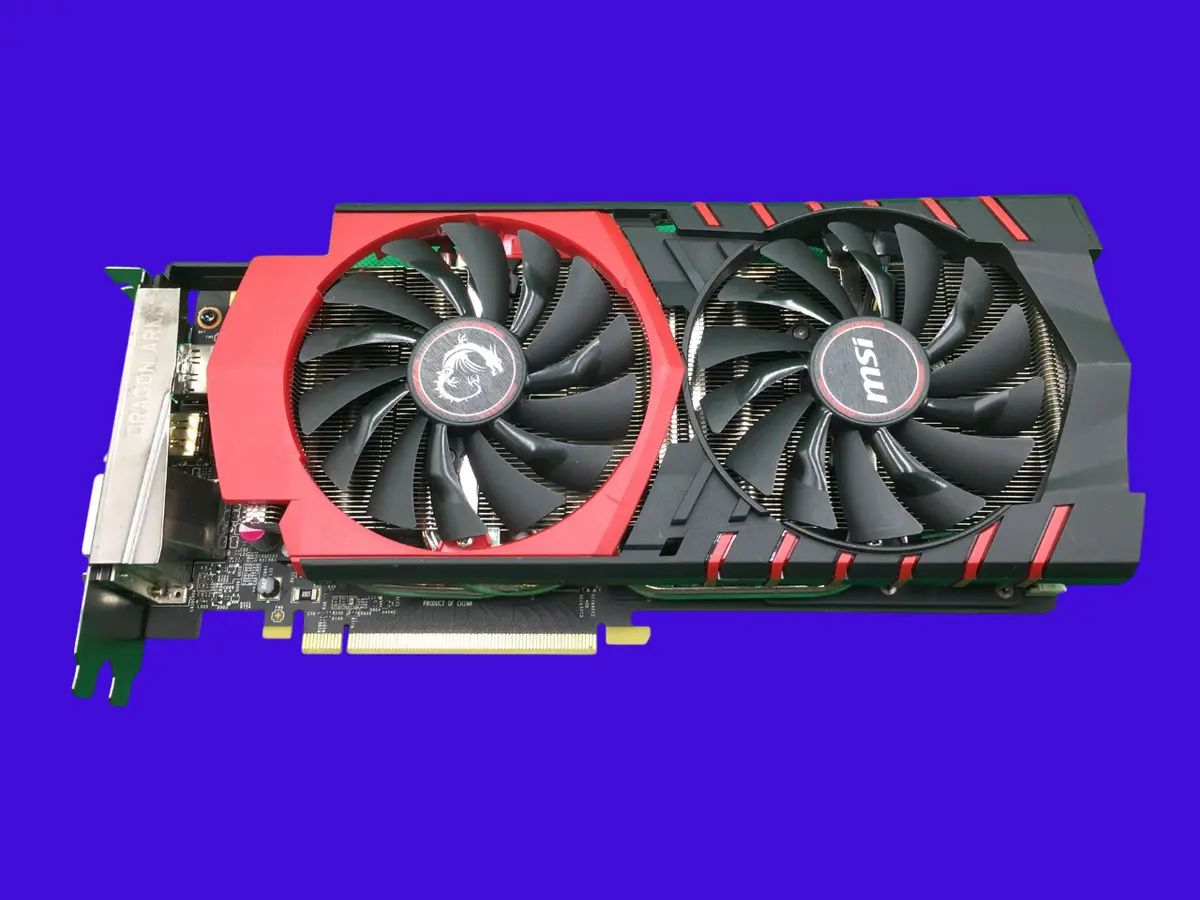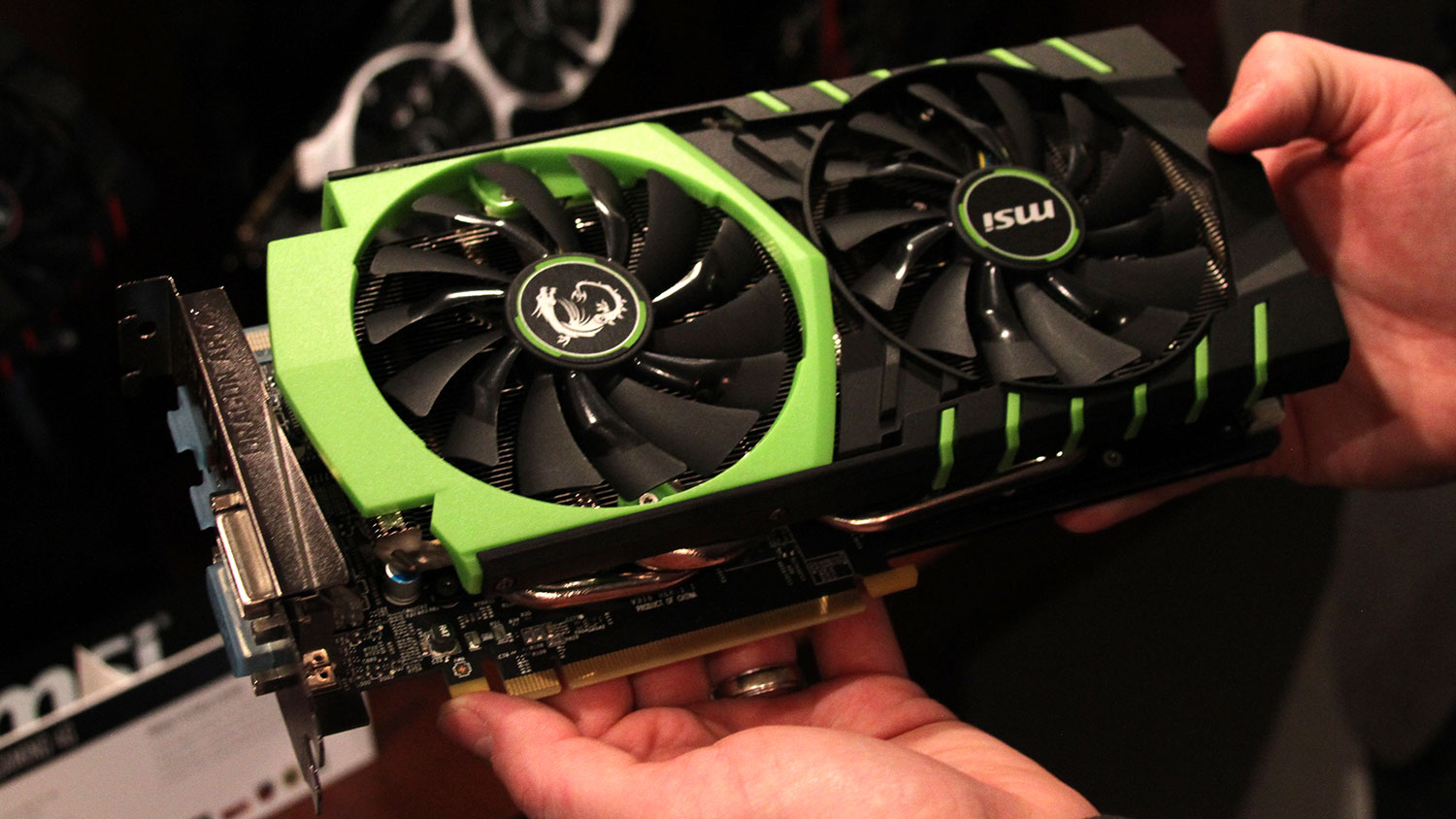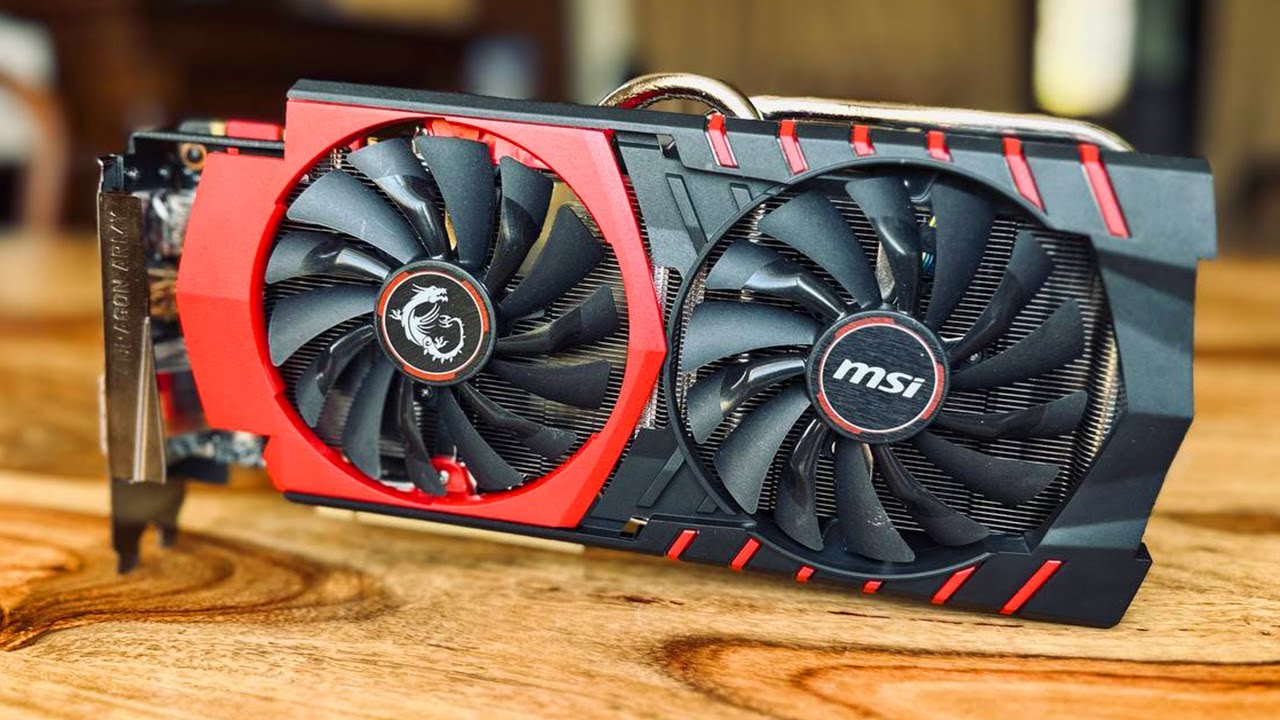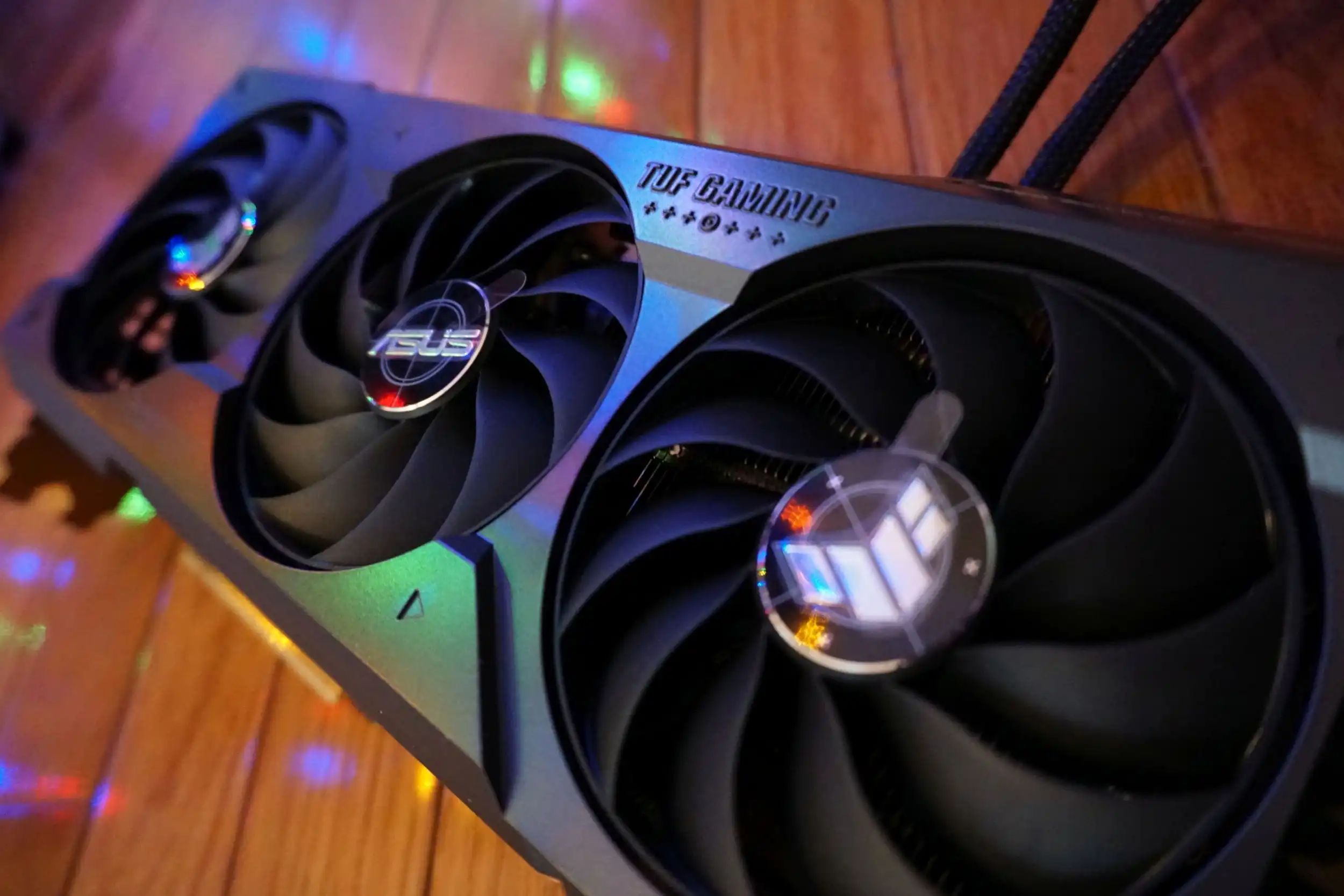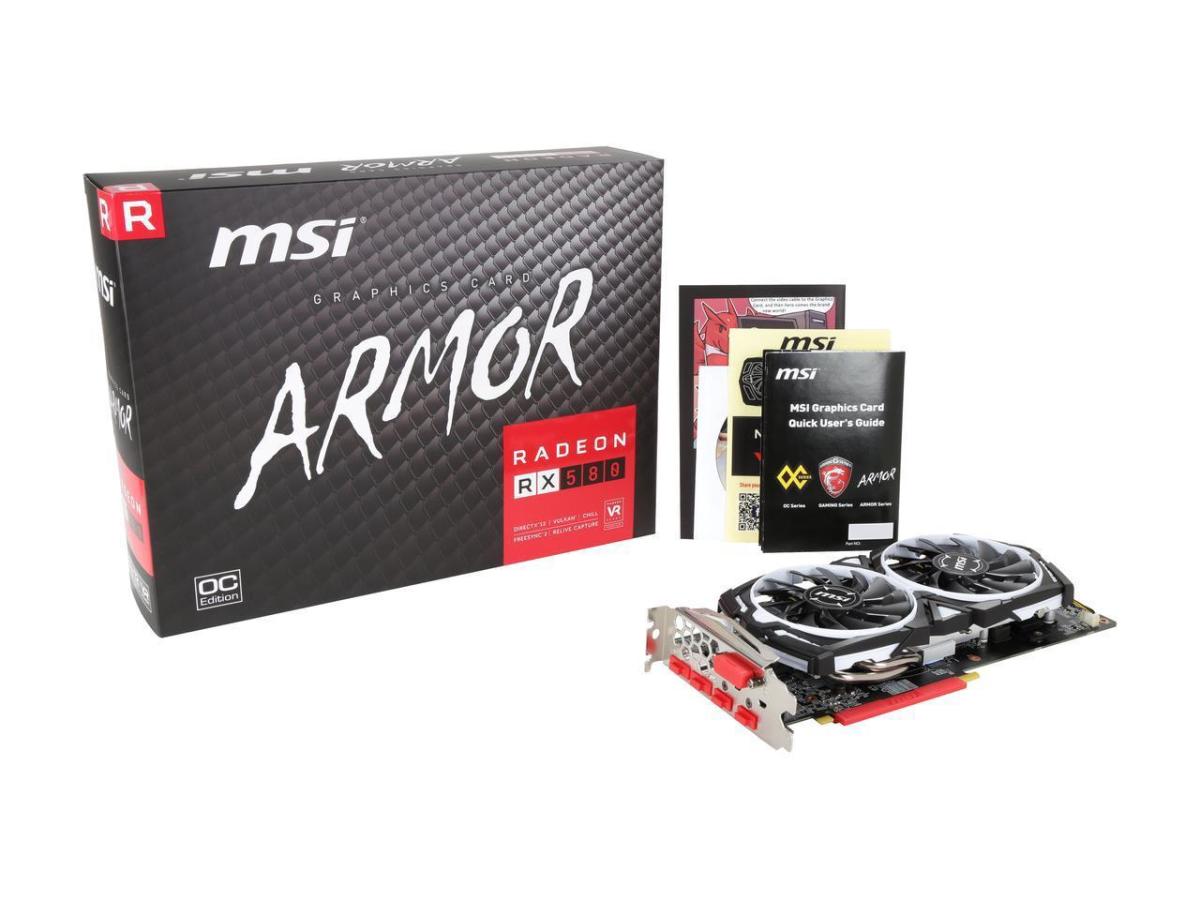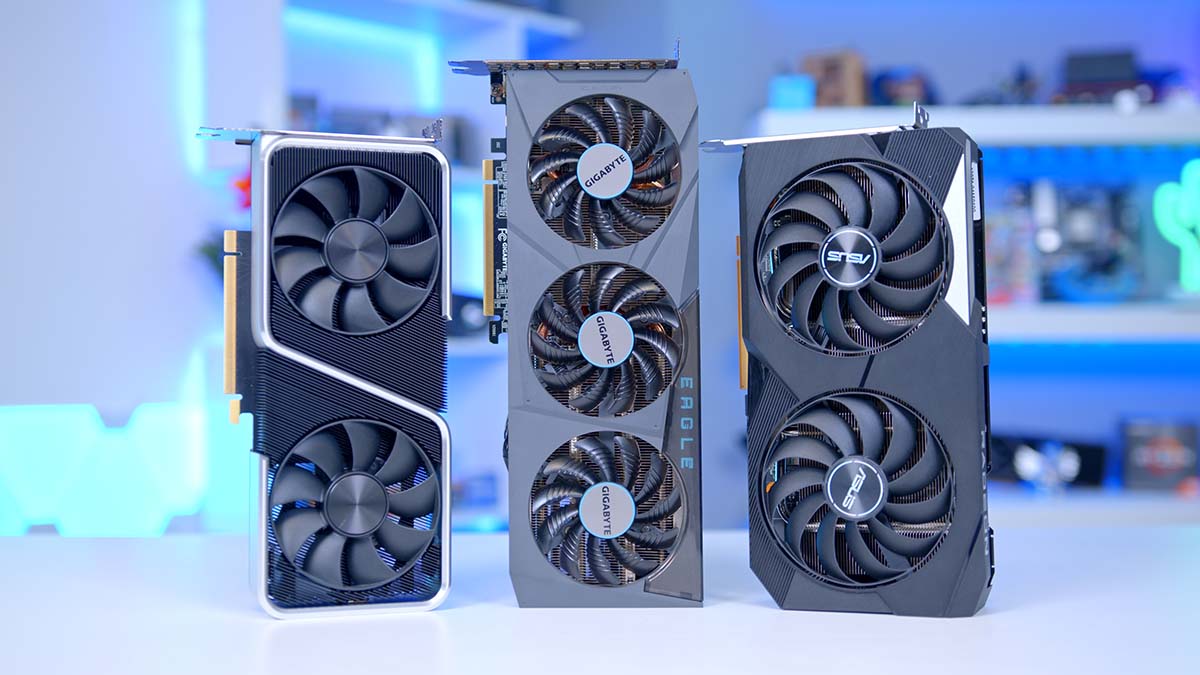Introduction
Adjusting the case fan is a crucial aspect of maintaining optimal performance and temperature control in an MSI970 system. The MSI970 is a popular motherboard model known for its versatility and ability to handle demanding tasks. Whether you’re a gaming enthusiast or a professional using resource-intensive applications, ensuring that the case fan is properly adjusted can make a significant difference in the overall performance and longevity of your system.
The case fan plays a vital role in dissipating heat and preventing heat buildup within the computer case. By adjusting the fan speed, you can ensure efficient cooling while maintaining a quiet operation. An improperly adjusted fan can lead to increased system temperatures, which can affect the stability and performance of your system. Therefore, it is essential to have the necessary tools and knowledge to adjust the case fan effectively.
In this guide, we will explore various methods to adjust the case fan speed in an MSI970 system. We will cover step-by-step instructions on using the BIOS, MSI Command Center, and third-party software to fine-tune the fan speed. Additionally, we will discuss the importance of monitoring and fine-tuning the fan speed to ensure optimal performance and minimize system noise.
So, if you’re ready to take control of your MSI970 system’s cooling capabilities and unleash its full potential, let’s dive into the world of adjusting the case fan speed!
What is MSI970?
MSI970 is a popular motherboard model produced by MSI, a leading manufacturer of computer hardware components. The MSI970 motherboard is specifically designed for use with AMD processors and offers exceptional performance and reliability. It supports the AMD AM3+ socket and is compatible with a wide range of AMD processors, including the FX series.
This motherboard is equipped with advanced features and technologies that cater to the needs of both gamers and professional users. It provides support for high-speed DDR3 memory modules, enabling faster data transfer rates and improved multitasking capabilities. The MSI970 also comes with multiple expansion slots, allowing you to customize your system with additional graphics cards, sound cards, and other peripherals.
One of the standout features of the MSI970 is its robust power delivery system. It utilizes high-quality components and advanced circuitry to ensure stable power distribution to the CPU and other system components. This enhances system stability and enables reliable performance even under demanding workloads.
Another notable aspect of the MSI970 is its comprehensive cooling solution. It includes multiple fan headers and provisions for case fans, allowing you to optimize airflow and maintain optimal temperatures within the system. The motherboard also supports smart fan control, which enables automatic adjustment of fan speed based on system temperature, ensuring efficient cooling without excessive noise.
The MSI970 motherboard incorporates cutting-edge technologies and features to enhance overall system performance. It provides support for multi-GPU configurations, allowing for improved graphics processing capabilities. Additionally, it offers high-speed connectivity options, including USB 3.0 and SATA 6Gb/s ports, ensuring fast data transfer speeds and efficient storage capabilities.
Overall, the MSI970 motherboard is a versatile and highly capable option for users looking to build a powerful and reliable system. Its robust construction, advanced features, and customizable options make it a popular choice among gamers, content creators, and professionals who require high-performance computing.
The Importance of Adjusting Case Fan
Properly adjusting the case fan in an MSI970 system is essential for several reasons. Maintaining optimal fan speed and airflow is crucial to ensure efficient cooling and prevent heat-related issues. Let’s take a closer look at why adjusting the case fan is important:
- Temperature Control: The case fan helps dissipate the heat generated by the CPU, graphics card, and other components. By adjusting the fan speed, you can ensure that hot air is efficiently expelled from the case, preventing temperature spikes that could potentially damage the hardware.
- System Stability: Overheating can lead to system crashes, freezes, and unexpected shutdowns. By keeping the temperatures in check through proper fan adjustment, you can enhance the stability of your MSI970 system, ensuring uninterrupted performance, especially during long gaming sessions or resource-intensive tasks.
- Longevity of Components: Excessive heat can impact the lifespan and performance of your hardware components. By maintaining optimal temperatures, you can extend the longevity of your CPU, graphics card, and other critical parts, ultimately maximizing the return on your investment.
- Noise Reduction: Case fans operate at different speeds, and adjusting their settings can help achieve a balance between cooling efficiency and noise generation. By finding the optimal fan speed, you can minimize noise levels and enjoy quieter operation, creating a more comfortable and immersive computing experience.
- Performance Optimization: In addition to cooling, adjusting the case fan can enhance the overall performance of your system. By reducing heat buildup, you can prevent thermal throttling, which can limit the processing power of your CPU and graphics card. This allows your hardware to operate at its full potential, delivering smoother gaming experiences and faster data processing.
Adjusting the case fan speed in an MSI970 system is a straightforward process that can have a significant impact on the performance, longevity, and overall experience. With the right adjustments, you can strike a balance between efficient cooling and reduced noise, ensuring that your system operates optimally under various workloads.
Now that we understand the importance of adjusting the case fan, let’s explore the tools and methods you can use to achieve optimal fan settings in your MSI970 system.
Tools Needed for Adjusting Case Fan
Before you can adjust the case fan in your MSI970 system, it is important to gather the necessary tools and software. Here are the key tools you will need:
- MSI970 Motherboard: The MSI970 motherboard is the foundation of your system and is specifically designed to support AMD processors. It provides the necessary fan headers and controls to adjust the case fan speed.
- Computer Case: Your computer case should have provisions for installing case fans. Make sure your case has the necessary mounting points and fan slots to accommodate the case fan.
- Case Fan: You will need a case fan that is compatible with your computer case and offers the desired airflow and noise levels. Choose a fan size and specifications that suit your needs.
- Bios: The motherboard’s BIOS (Basic Input/Output System) is a firmware that provides low-level hardware control. You will need access to the BIOS settings to adjust the fan speed manually.
- MSI Command Center: MSI Command Center is a software utility provided by MSI that allows you to customize various settings, including fan speed, through a user-friendly interface.
- Third-Party Software: Depending on your preference, you may also opt to use third-party software to adjust the case fan speed. These software applications provide advanced fan control options and additional monitoring features.
- Hardware Monitoring Software: To monitor the temperatures, fan speeds, and other system parameters, you will need hardware monitoring software. There are various options available, such as HWMonitor, SpeedFan, and MSI Afterburner.
- Keyboard and Mouse: Finally, ensure you have a keyboard and mouse to navigate through the BIOS settings and software interfaces comfortably.
Having these tools and software ready will ensure a seamless process of adjusting the case fan speed in your MSI970 system. It’s important to note that some MSI970 motherboards may come with additional features or software specific to the model. Refer to the motherboard’s documentation or MSI’s official website for any specific tools or utilities that may be required.
Now that you have gathered the necessary tools, let’s explore the step-by-step process of adjusting the case fan speed using different methods available on the MSI970 motherboard.
Step 1: Determine the Current Fan Speed
Before you start adjusting the case fan in your MSI970 system, it is important to determine the current fan speed. This will give you a baseline reference and help you assess whether any adjustments are necessary. Here’s how you can determine the current fan speed:
- Access the BIOS Settings: Restart your computer and enter the BIOS settings by pressing the designated key during the startup process. The key to access the BIOS may vary depending on the motherboard model, but common keys include Del, F2, or F10. Refer to your motherboard’s documentation for the specific key.
- Navigate to the Fan Settings: Once you are in the BIOS settings, look for the section related to fan control or monitoring. The location and name of this section may vary depending on the motherboard model. Look for options such as “Fan Control,” “Hardware Monitor,” or “Power Management.”
- Check the Fan Speed: Within the fan settings section, you should see information about the current fan speed. It is usually displayed in RPM (revolutions per minute). Take note of the fan speed values for reference.
- Exit BIOS Settings: After noting down the fan speed, exit the BIOS settings. Save any changes if prompted, or simply exit without saving if you didn’t make any modifications.
Alternatively, you can use hardware monitoring software to determine the fan speed while the system is running. Install a monitoring software tool, such as HWMonitor or MSI Afterburner, and launch it. Look for the fan speed information under the respective section or tab, and note down the values accordingly.
By determining the current fan speed, you will have a starting point for adjusting the case fan. This will help you gauge the effectiveness of your adjustments and ensure that the fan is operating optimally. Now that you have determined the current fan speed, let’s move on to the next step – adjusting the fan speed using the BIOS settings.
Step 2: Adjusting Fan Speed Using BIOS
Adjusting the case fan speed through the BIOS settings is a popular method for MSI970 systems. The BIOS provides direct control over the hardware, allowing you to fine-tune the fan speed to match your specific requirements. Here’s how you can adjust the fan speed using the BIOS:
- Access the BIOS Settings: Restart your computer and enter the BIOS settings by pressing the designated key during the startup process. The key to access the BIOS may vary depending on the motherboard model, but common keys include Del, F2, or F10. Refer to your motherboard’s documentation for the specific key.
- Navigate to the Fan Settings: Once you are in the BIOS settings, look for the section related to fan control or monitoring. The location and name of this section may vary depending on the motherboard model. Look for options such as “Fan Control,” “Hardware Monitor,” or “Power Management.”
- Select the Fan Speed Mode: Within the fan settings section, you should see options to adjust the fan speed. Most MSI970 motherboards offer different modes, such as “Silent,” “Standard,” or “Performance.” These modes determine the fan speed range and noise levels. Select the desired mode based on your needs.
- Adjust the Fan Curve (Optional): Some BIOS settings provide the option to customize the fan curve. The fan curve determines the fan speed based on the system temperature. By adjusting the points on the fan curve, you can set specific fan speeds at different temperature thresholds. This allows for more precise control over the fan speed. Use the arrow keys or mouse to adjust the points on the fan curve as needed.
- Save and Exit: After making your adjustments, save the changes and exit the BIOS settings. You may be prompted to save changes and restart the system. Confirm the changes and let the system restart.
Once the system has rebooted, the case fan speed will be adjusted according to the settings you configured in the BIOS. Pay attention to the fan noise and system temperatures to ensure that the adjustments are effective. If necessary, repeat the above steps and fine-tune the settings to achieve optimal cooling performance.
Adjusting the case fan speed through the BIOS provides direct control and is relatively simple to implement. However, if you prefer a more intuitive and user-friendly method, you can also adjust the fan speed using the MSI Command Center, which we will discuss in the next step.
Step 3: Adjusting Fan Speed Using MSI Command Center
MSI Command Center is a software utility provided by MSI specifically designed for adjusting various settings, including fan speed, in MSI970 systems. It offers a user-friendly interface that allows you to customize and monitor your system in real-time. Here’s how to adjust the fan speed using MSI Command Center:
- Download and Install MSI Command Center: Visit the official MSI website and navigate to the support section for your specific motherboard model. Download the latest version of MSI Command Center compatible with your system. Install the software by following the on-screen instructions.
- Launch MSI Command Center: After installation, launch MSI Command Center by locating the program in the installed applications or using the desktop shortcut. The software will present an overview of your system’s current status.
- Go to Fan Control: In MSI Command Center, locate the “Fan Control” tab or section. This is where you can fine-tune the fan speed settings.
- Select the Fan: From the list of fans displayed in the fan control section, select the fan you wish to adjust. If your motherboard supports multiple case fans, make sure to select the appropriate one.
- Adjust the Fan Speed: Use the slider or input field provided to set the desired fan speed. You can choose a preset speed, or manually adjust it to your preference. MSI Command Center may also offer additional options, such as predetermined fan profiles or the ability to create custom profiles.
- Apply the Changes: Once you have made the desired adjustments, click the “Apply” or “Save” button to save the changes and apply the new fan speed settings.
- Monitor the Fan Speed: MSI Command Center provides real-time monitoring of system temperatures, fan speeds, and other hardware parameters. Use this feature to monitor the adjusted fan speed and ensure that it remains within the desired range.
By using MSI Command Center, you can easily adjust the case fan speed to your liking. The software offers a more intuitive and user-friendly interface compared to adjusting the fan speed through the BIOS. Experiment with different fan speed settings to achieve the ideal balance between cooling performance and noise levels.
In the next step, we will explore an alternative method of adjusting the case fan speed using third-party software, providing even more flexibility and customization options.
Step 4: Adjusting Fan Speed Using Third-Party Software
In addition to the BIOS and MSI Command Center, you can also adjust the case fan speed in your MSI970 system using third-party software. These software programs offer advanced fan control options and additional customization features. Here’s how you can adjust the fan speed using third-party software:
- Download and Install Third-Party Software: Choose a reputable third-party software that offers fan control capabilities. Some popular options include SpeedFan, HWMonitor, and Open Hardware Monitor. Visit the software’s official website and download the latest version compatible with your operating system. Install the software by following the provided instructions.
- Launch the Software: After installation, launch the third-party software by locating the program in your installed applications or using the desktop shortcut.
- Locate Fan Control or Settings: Once the software is launched, look for the fan control or settings tab. The location and name of this section may vary depending on the software you are using. Look for options such as “Fan Control,” “Smart Fan,” or “Hardware Monitor.”
- Select the Fan: In the fan control section, you may be presented with a list of available fans. Select the fan you wish to adjust. If your motherboard supports multiple case fans, make sure to select the appropriate one.
- Adjust the Fan Speed: Use the available controls, sliders, or input fields to adjust the fan speed to your desired level. Some third-party software may also offer additional features, such as creating custom fan profiles or setting temperature thresholds for automatic fan speed adjustments.
- Apply the Changes: Once you have made the desired adjustments, click the “Apply” or “Save” button to save the changes and apply the new fan speed settings.
- Monitor the Fan Speed: The third-party software will provide real-time monitoring of the fan speed, system temperatures, and other relevant parameters. Keep an eye on these readings to ensure that the fan speed remains within the desired range.
Using third-party software gives you more flexibility and customization options when it comes to adjusting the case fan speed. These software programs often offer advanced features and a user-friendly interface for precise control. Experiment with different fan speed settings to find the optimal balance between cooling performance and noise levels that suits your specific needs.
In the next step, we will discuss the importance of monitoring and fine-tuning the fan speed to ensure optimal performance and minimize system noise in your MSI970 system.
Step 5: Monitoring and Fine-Tuning Fan Speed
After adjusting the case fan speed in your MSI970 system, it is crucial to monitor and fine-tune the settings to ensure optimal performance and minimize system noise. This step allows you to assess the effectiveness of your adjustments and make any necessary refinements. Here’s how you can monitor and fine-tune the fan speed:
- Utilize Hardware Monitoring Software: Use hardware monitoring software, such as HWMonitor, SpeedFan, or MSI Afterburner, to keep track of system temperatures, fan speeds, and other relevant parameters in real-time. Observe the fan speed readings to ensure that they remain within the desired range.
- Check System Temperatures: Monitor the temperatures of your CPU, graphics card, and other critical components using the hardware monitoring software. Make sure the fan speed adjustments are effectively regulating the temperatures and keeping them within acceptable limits. If the temperatures are consistently high, consider increasing the fan speed slightly.
- Listen for Noise Levels: Pay attention to the noise levels generated by the case fan. If the fan speed adjustments have resulted in excessive noise, you may need to lower the fan speed slightly. Conversely, if the system temperatures are still higher than desired, try increasing the fan speed incrementally to improve cooling performance.
- Fine-Tune Fan Curve (If Available): If you adjusted the fan curve in the BIOS or through software, you may need to fine-tune the settings further. Observe the system temperatures at different workloads and adjust the fan curve accordingly. This will ensure that the fan speed responds appropriately to changes in temperature.
- Regularly Maintain and Clean the Fan: Over time, dust and debris can accumulate on the case fan, affecting its performance. Regularly clean the fan and the surrounding area to ensure unrestricted airflow. This will help maintain optimal cooling performance and prevent fan noise due to dust buildup.
Continuously monitoring and fine-tuning the fan speed ensures that your MSI970 system remains cool, stable, and performs optimally. Keep an eye on the system temperatures and noise levels, and make adjustments as needed. With a balanced fan speed and well-regulated temperatures, you can enjoy a quieter and more efficient computing experience.
Now that you have gone through the steps of adjusting and optimizing the case fan speed in your MSI970 system, you are ready to enjoy improved performance, stability, and cooling capabilities. Regularly assess the effectiveness of your adjustments and make refinements whenever necessary to ensure the longevity and efficient operation of your system.
Conclusion
Adjusting the case fan speed in your MSI970 system is crucial for maintaining optimal performance, temperature control, and overall system health. By properly managing the fan speed, you can prevent overheating, enhance system stability, prolong the lifespan of components, reduce noise levels, and optimize overall performance.
Throughout this guide, we explored various methods to adjust the case fan speed in an MSI970 system. We started by understanding the importance of adjusting the fan speed and the tools needed for the process. We then explored the step-by-step process of determining the current fan speed, adjusting the speed through the BIOS settings, using MSI Command Center, and utilizing third-party software. Additionally, we discussed the significance of monitoring and fine-tuning the fan speed to ensure optimal performance and minimize system noise.
Remember, finding the right balance between cooling performance and noise levels is essential. Continuously monitor the system temperatures and noise levels, making adjustments as necessary. Regular maintenance, such as cleaning the case fan and ensuring proper airflow, is also crucial for optimal cooling performance.
By following the steps outlined in this guide, you can take control of the case fan speed in your MSI970 system, ensuring efficient cooling and a stable computing experience. Experiment with different fan speed settings and monitor the results to find the ideal balance that suits your specific needs.
Now that you are equipped with the knowledge to adjust the case fan speed, unleash the full potential of your MSI970 system and enjoy improved performance, system longevity, and a quieter computing experience.







